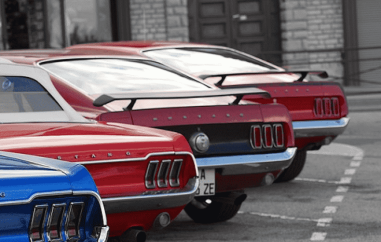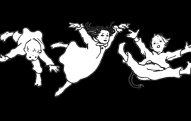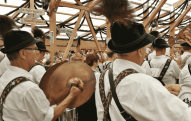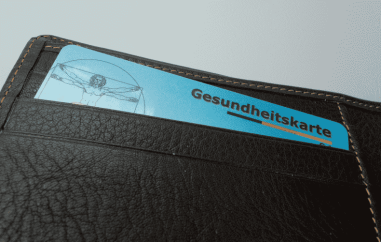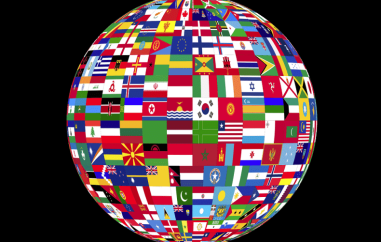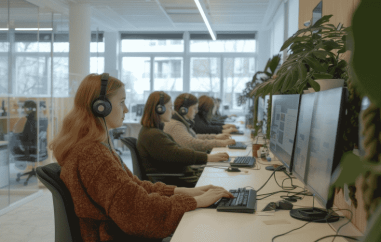Decolonize München - will it change something in people´s minds?
Lots of beautiful, half-naked people, savagely beating the drums, dancing in raffia-skirties and singing foreign melodies: a picture of rural Africa, people still one with nature and friends with zebras, ostriches, lions, giraffes. What´s wrong with that? To be honest a few years ago I didn´t understand when I saw André Heller´s "Afrika! Afrika!" show with my then pre-teen daughter. Now I understand that this kind of show is in line with earlier anthropological displays of foreign cultures, popular between 1870 and 1940. Showing people of an entire continent as one stereotype that doesn´t exist in real life produces racism and allows for neo-colonial behavior and exploitation to be accepted.
The exhibition "Decolonize München" consists of three several approaches each attempting to illuminate the colonial epoch within the historical and contemporary context. One part of the show is called "Spuren Blicke Stören - dekolonisieren.münchen | dekolonisieren.museum" ("Vestiges Views Revisions", curated by Zara S. Pfeiffer and Dr. W. Rühlemann) and displays racist presentations that are part of the Munich Stadtmuseum collection. It is important in which manner people look at racism and how exhibits like that are displayed to not just reproduce discrimination.
These racist objects are shown in non-illuminated glass cases so that the visitor has to consciously push a pedal to switch on the lighting. Everybody can determine how long she wants to look at it, it´s the viewer´s own decision; also, as the glass is reflective it is a very palpable way of making one aware that we are a part of the bigger picture; it pushes you to reflect.
What do you know about German colonization or colonization in general? Is it something you notice in every-day life? If you stumble upon vestiges of our colonial past, do you notice them? Things like the "Zum M*kopf Café & Wein" at Munich Oktoberfest, or heard of the "Colonial quarters" Bogenhausen and Trudering where you´ll find streets named after colonial mass murderers. Or have you ever wondered why on earth in some bars you still can order coke-and-wheat beer named N*? Or "Master´s Home": a bar where you are invited to feel the atmosphere of "English colonial supremacy" and colonial dreams of white emperors! So the vestiges of this heritage are still visible a lot which means it is also necessary to decolonize within our own minds.
A recent example of racism in people´s minds is the N-word controversy where the public discussed vehemently if it is ok to replace racist expressions in children's books. Is it more important to keep the author´s original expressions or to replace them with non-hurtful ones in new editions?
Back to the museum: The other part of "Spuren Blicke Stören "("Vestiges Views Revisions") has a multimedia approach; it incorporates a website display of colonial tracks which look like pencil marks on an underlying map of Munich. While I´m writing this suddenly an audibly sharp wind starts blowing and by that is demanding my attention back to the website http://mapping.postkolonial.net/mapping. You can decide how to approach the topic by either looking at the "tracks", "narration", "layers" or "ghosts". The so-called ghosts can´t actively be clicked and manifest every-day racism and ignorance.
Thus you´ll find lots of stories, information and learnings. There are also 36 postcards which are aimed to be taken and spread throughout the city and represent a number of the online vestiges. They are linked to one of seven underlying topics. The postcards are provided with QR codes on the back leading to more information.
Colonization is a somewhat forgotten and neglected subject, also because racism is a structural problem. We have to be aware that it is hard to understand the present and future without looking back at the past.
So let´s look back at the story of Juri and Miranha, two Brazilian children who were deported by Johann Baptist von Spix and Carl Friedrich Philipp von Martius, two research scientists who were taking everything they found attractive back home to explore it. Juri and Miranha didn´t survive the climate change and their being exhibited and looked at by the curious public, their being extensively measured, drawn and documented. There is not too much left in remembrance of these children and the available material just allows looking at them from the scientists' perspective. But Spix and Martius can still be found lying peacefully in their graves at "Südfriedhof" in Munich. Streets are named after them and even a bust honoring Martius.
"Freedom Roads!" (concept and design by Christian Koop and HMJokinen) is the next station on our Stadtmuseum tour. It shows road signs honoring colonial mass murderers and at the same time suggests more adequate names for these streets. It also portrays African colonial resistance with a focus on women´s resistance; the show looks at the perspectives of the colonized. "Freedom roads!" is a touring exhibition which was already in Hamburg and Berlin and it is growing each time as visitors are invited to submit their suggestions for renaming the streets; everybody can contribute by bringing some input and artistically pronounce what colonial history means for each of them.
Lastly, I want to take a look at the example of slave trader Schimmelmann´s statue in Hamburg: unbelievably in 2006 he was honored with it because his family were famous merchants back in the 18th century, they were one of the major slave traders who earned a fortune with sugar breakdown. In recent years the public has been getting more and more aware of the cruelties connected with colonization. As a result acceptance of this memorial was low and after massive protests the authorities quietly removed it in 2008.
Georges Adéagbo, archeologist, conceptual artist and one of the most renowned African artists also is part of "Decolonize München" with his show "L'Allemagne avant la Guerre et l'Allemagne après la Guerre" ("Germany before and after the War") and presents an installation with objects of popular culture and advanced civilization, interpretations of personal historiography: see his collected items scattered throughout the room and an altar-like object in the middle of it. Trivial and meaningful items, African documents, Bavarian folk music, beer advertisements, German literature, "Mein Kampf"...
Adéagbo plays with the visitor´s expectations of what an African artist should exhibit and satirizes these expectations; simultaneously he explores Bavaria as an archeologist and shows us his findings. So the visitors can experience how it feels to be exhibited in a specific way and can reflect what colonialism did and neocolonialism still does - it reduces people to one stereotype. Adéagbo aims for people changing their perspective and aims to inspire reflection.
As you can see there is a lot to address, to learn, to put on the plate and this is what the nationwide perceived exhibition "Decolonize München" at Munich Stadtmuseum does. It was a necessary and courageous step. Courageous because the museum had to look at its own history and ask itself how it came to be in possession of certain pieces! A broad supplementary program, curated by Sarah Bergh, with lots of panel discussions, movies, guided tours and other informative events as well as workshops for school classes accompanies the exposition.
So maybe one day not too far people are more aware of what shows like "Afrika! Afrika!" do and go through their city with open eyes to address what still needs to change.
Exhibition "Decolonize München" at Munich Stadtmuseum from 25.10.2013 to 23.02.2014








